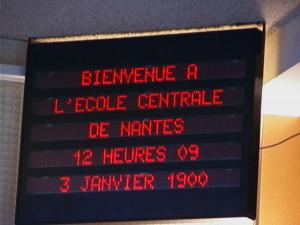Remember using paper maps to get places?

I do.
Today people have talking computers suctioned to their car windshields to guide them to places they’ve never been. But when I was a kid we had only paper maps to scream at when we got lost. And each other.
The maps were a sagging bulge in the pouch at the back of the passenger seat of my father’s Renault, and covered our general traveling region: upstate New York, New England, and other places that put ketchup and mustard on hamburgers unless you asked otherwise.
I don’t think a single map, once unfolded, has ever been folded back again. It is the law of entropy. No matter how many diagrams and colored tags I used, I could never get the map folded up sharp and neat like it had been on the rack at the rest area store by the Roy Rodgers and the machine that flattened pennies. The best I could do was crumple the map into something approaching a rectangle, and squeeze like I had to nail a sforzando on an accordion.
And that was just putting the map away. Reaching for the map was even more dangerous. It often ripped. Once we were negotiating around the Boston Museum of Science, and my father needed me to navigate instead of watching my breath condense on the window. But the Commonwealth of Massachusetts had become a stack of paper that I flipped through like I was counting money. Then a pigeon flew away with one of the sheets, and we could not find our motel again.
Before long trips I would spread the map or map pieces before me, and trace our intended path, imagining our car following the same red-lined trajectory as the plane in the Indiana Jones movies. Sometimes my father would whistle the Indiana Jones music while I did this. When we got lost, the whistling ceased.
“But where is the dang exit?” he would ask rhetorically on the shoulder of Interstate 95, the skies darkening, and motel vacancies vanishing by the second. “The number is right next to the highway on this page, but all I see is another sign for corn.” I wanted to help him at these times, but the only things I knew how to do with a map was trace my finger along it.
The best was the time my grandparents took my brother and I to Disney World. My grandfather was following a set of directions that he’d written down on a piece of paper, and my grandmother was reading them back to him as he drove. “It says take Exit 16 A-B,” my grandmother said.
“What’s A-B? I never heard of an exit that ended in A-B.”
“Well you wrote it. Don’t blame me.”
We passed Exit 16 A, and then we passed Exit 16 B. But no Exit “A-B.” The next exit was Exit 17. So we had to get turned around in a swamp, asking an alligator for directions that were not remembered because we all thought someone else was listening. I thought I could hear the fireworks at the Magic Kingdom over the Yiddish being screamed two feet away from my ear. Eventually we pulled over, and after more careful examination my grandfather concluded that the directions were supposed to say Exit 16 A or B. “Exit A or B,” he kept saying as we pulled into our lodgings, dreams of long lines and expensive souvenirs already dancing in my head.
Today these dramas are played out with sterile soft-spoken machines that says things like, “Turn right,” and “Recalculating; Drive…three…blocks…then…turn left.” The computer should say, “Recalculating; Pull over…and…bang your head against the…driver’s side…window.” That would add some of the old excitement that made family trips memorable. Screaming at a machine is just not the same.








